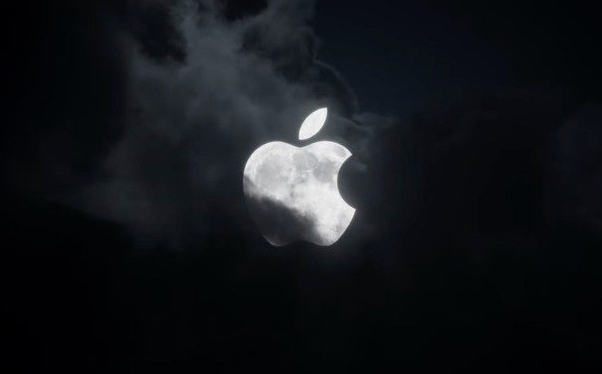For Intel-based Macs, use Boot Camp Assistant to create a dual-boot system with Windows by preparing a USB drive, downloading a Windows ISO, partitioning the disk, and installing Windows alongside macOS with support drivers. 2. For Apple Silicon Macs (M1/M2/M3), use virtualization software like Parallels Desktop, VMware Fusion, or UTM to run Windows 11 ARM64 in a virtual machine, as Boot Camp is not supported, ensuring you have sufficient RAM, storage, and a valid Windows license while expecting good performance for most tasks but limitations for intensive applications like high-end gaming.

Installing Windows on a Mac is possible thanks to Apple’s Boot Camp Assistant (for Intel-based Macs) or virtualization software (for Apple Silicon and newer Macs). The method you use depends on your Mac model and whether it has an Intel processor or Apple’s M-series chip.

Here’s how to do it based on your Mac type:
1. For Intel-based Macs: Use Boot Camp Assistant (Dual Boot)
Boot Camp allows you to install Windows alongside macOS and choose which OS to boot into at startup.

What You’ll Need:
- A USB flash drive (at least 16GB) for the Windows installer
- A Windows 10 or Windows 11 ISO file (download from Microsoft)
- A Mac with an Intel processor (check under "About This Mac" > Processor)
- At least 64GB of free disk space
- An external keyboard (if using a laptop) during installation
Steps:
-
Download the Windows ISO
- Go to Microsoft's official site and download a Windows 10 or 11 ISO.
-
Open Boot Camp Assistant

- Found in
Applications > Utilities > Boot Camp Assistant.
- Found in
-
Follow the Setup Wizard
- Click "Continue" and check the boxes:
- Create a Windows install disk
- Download the latest Windows support software from Apple
- Select your USB drive when prompted.
- Click "Continue" and check the boxes:
-
Partition Your Drive
- Drag the divider to allocate space for Windows (minimum 64GB recommended).
- Click "Install".
-
Install Windows
- The Mac will reboot and start Windows Setup.
- When prompted, select the partition labeled "BOOTCAMP".
- Format it (click "Format"), then proceed with installation.
-
Install Boot Camp Drivers
- After Windows installs, the Boot Camp installer should run automatically.
- These drivers enable Wi-Fi, sound, keyboard functions, and trackpad gestures.
-
Switch Between macOS and Windows
- Hold
Optionat startup to choose your OS. - Or set the default in System Settings (Windows) or Startup Disk (macOS).
- Hold
2. For Apple Silicon Macs (M1, M2, M3, etc.): Use Virtualization
Apple Silicon Macs don’t support Boot Camp. Instead, run Windows in a virtual machine.
What You’ll Need:
- macOS Monterey or later
- Parallels Desktop, VMware Fusion, or UTM (free option)
- Windows 11 ARM64 ISO (official Microsoft ARM version)
- At least 8GB RAM (16GB recommended), 64GB free storage
Recommended: Use Parallels Desktop
Parallels is the most user-friendly and optimized for Macs.
-
Download Parallels Desktop
- Free trial available at parallels.com.
-
Get Windows 11 for ARM
- Download the ARM64 ISO from Microsoft’s Windows Insider page (free account required).
-
Create a New Virtual Machine
- Open Parallels and click "New".
- Select the Windows ISO file.
- Parallels will guide you through setup—just follow the prompts.
-
Install Windows
- The VM will boot into Windows Setup.
- Choose default options and create a user account.
-
Install Parallels Tools
- Automatically installs drivers for better performance, drag-and-drop, and screen resizing.
Alternative: UTM (Free)
- UTM is a free app based on QEMU.
- More complex setup and slower performance, but it’s free.
- Great for light tasks or testing.
Important Notes:
- No Boot Camp on M1/M2/M3 Macs – Apple removed support, so dual booting isn’t officially possible.
- Performance: Virtual machines run well, especially in Parallels, but aren’t ideal for heavy gaming or high-end 3D apps.
- Licensing: You need a valid Windows license to activate after installation (not included with Mac).
- Back Up First: Use Time Machine before making system changes.
Summary
- Intel Mac? → Use Boot Camp for a native, dual-boot Windows experience.
- Apple Silicon Mac? → Use Parallels, VMware, or UTM to run Windows in a virtual machine.
It’s not as simple as on a PC, but with the right tools, Windows works well on Mac — whether you need it for software compatibility, gaming, or development.
Basically, pick the method based on your hardware, and you’re good to go.
The above is the detailed content of How to install Windows on a Mac. For more information, please follow other related articles on the PHP Chinese website!

Hot AI Tools

Undress AI Tool
Undress images for free

Undresser.AI Undress
AI-powered app for creating realistic nude photos

AI Clothes Remover
Online AI tool for removing clothes from photos.

Clothoff.io
AI clothes remover

Video Face Swap
Swap faces in any video effortlessly with our completely free AI face swap tool!

Hot Article

Hot Tools

Notepad++7.3.1
Easy-to-use and free code editor

SublimeText3 Chinese version
Chinese version, very easy to use

Zend Studio 13.0.1
Powerful PHP integrated development environment

Dreamweaver CS6
Visual web development tools

SublimeText3 Mac version
God-level code editing software (SublimeText3)

Hot Topics
 Windows night light not working
Jul 29, 2025 am 05:34 AM
Windows night light not working
Jul 29, 2025 am 05:34 AM
Night mode cannot adjust the color temperature or does not take effect, which is usually caused by system settings or driving problems. First check whether night mode is actually enabled: go to Settings > System > Display, confirm that the "Night Mode" switch is on. If the gray is not selected, it may be a problem with the graphics card driver or system version; secondly, if the color temperature adjustment is invalid, you can try restarting the Explorer, use the registry to repair, reset the night mode settings, and turn off the conflicting third-party software; finally check the time and geographic location permissions: Ensure that the location is allowed in the privacy settings, and enable the automatic time and time zone setting function.
 Linux vs Windows: Which Operating System is Better for You?
Jul 29, 2025 am 03:40 AM
Linux vs Windows: Which Operating System is Better for You?
Jul 29, 2025 am 03:40 AM
Windowsisbetterforbeginnersduetoeaseofuse,seamlesshardwarecompatibility,andsupportformainstreamsoftwarelikeMicrosoftOfficeandAdobeapps.2.LinuxoutperformsWindowsonolderorlow-resourcehardwarewithfasterboottimes,lowersystemrequirements,andlessbloat.3.Li
 How to create a guest account in Windows
Jul 30, 2025 am 12:55 AM
How to create a guest account in Windows
Jul 30, 2025 am 12:55 AM
ToenabletheGuestaccountinWindows10/11,openCommandPromptasAdministratorandrun"netuserGuest/active:yes".2.TheGuestaccounthaslimitedpermissionsandcannotinstallappsorchangesystemsettings.3.Optionally,createastandarduseraccountviaSettings>Acc
 How to assign a drive letter in Windows
Jul 30, 2025 am 04:54 AM
How to assign a drive letter in Windows
Jul 30, 2025 am 04:54 AM
ToassignadriveletterinWindows,useDiskManagementorCommandPrompt.2.InDiskManagement,pressWindows X,selectDiskManagement,right-clickthevolumewithoutaletter,choose"ChangeDriveLetterandPaths",clickAdd,selectaletter(avoidA:orB:),andclickOK.3.Alte
 How to find the installation date of Windows
Jul 30, 2025 am 04:57 AM
How to find the installation date of Windows
Jul 30, 2025 am 04:57 AM
UseCommandPromptbytypingsysteminfo|find"OriginalInstallDate"toinstantlyseetheoriginalWindowsinstallationdate.2.Alternatively,usePowerShellwith(Get-ItemProperty-Path"HKLM:\SOFTWARE\Microsoft\WindowsNT\CurrentVersion").InstallDatean
 How to troubleshoot high DPC latency in Windows
Jul 30, 2025 am 02:08 AM
How to troubleshoot high DPC latency in Windows
Jul 30, 2025 am 02:08 AM
UseLatencyMontoidentifyhighDPC/ISRtimesandpinpointproblematicdrivers.2.UpdateorrollbacknetworkandWi-Fidrivers,especiallyfromIntel,Realtek,orKiller,anddisableunusedBluetooth.3.Updateordisablehigh-DPChardwaredriverssuchasUSB,audio,graphics,orNVMecontro
 How to create a system image in Windows
Jul 30, 2025 am 04:57 AM
How to create a system image in Windows
Jul 30, 2025 am 04:57 AM
OpenBackupandRestoreviaWindows S,typeBackupandRestore,clickCreateasystemimage.2.Savetheimagetoanexternalharddrive(recommended),selectitfromthedropdown,andclickNext.3.Confirmincludeddrives(systemreservedandC:bydefault),addothersifneeded,thenclickNext.
 How to create a new user account in Windows
Jul 29, 2025 am 05:16 AM
How to create a new user account in Windows
Jul 29, 2025 am 05:16 AM
TocreateanewuseraccountinWindows,openSettingsviaWin I,gotoAccounts,selectFamily&otherusers(orOtherusers),clickAddaccountorAddsomeoneelsetothisPC,choosesign-inmethod,enterMicrosoftaccountorcreatealocalaccountwithusernameandpassword,thenoptionallyc







